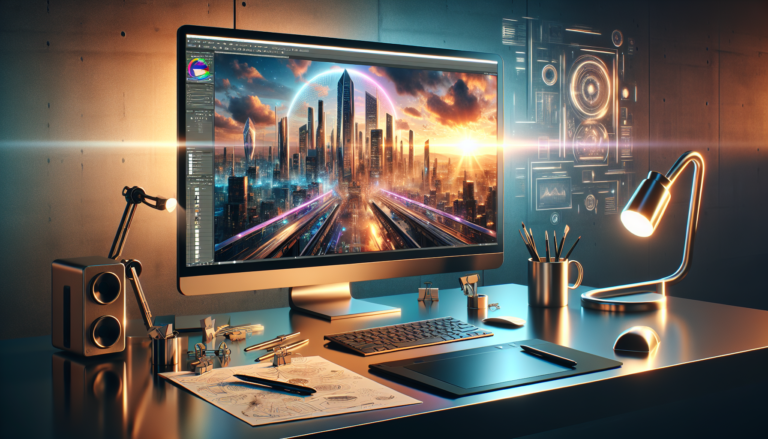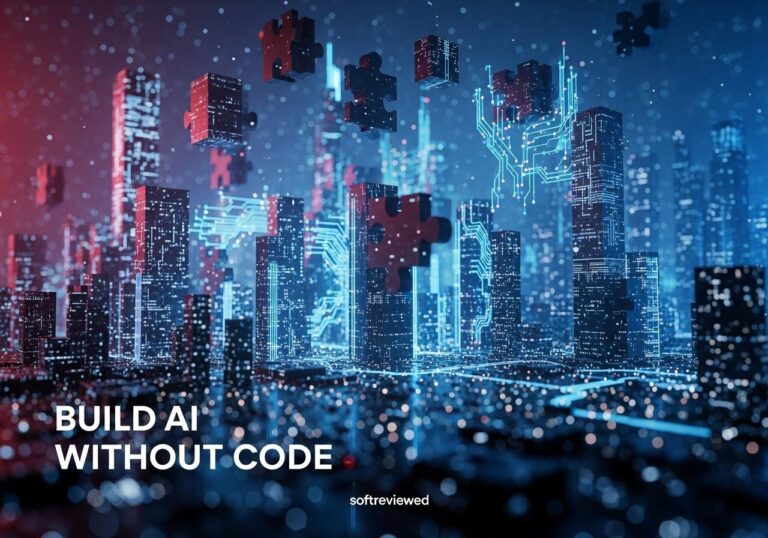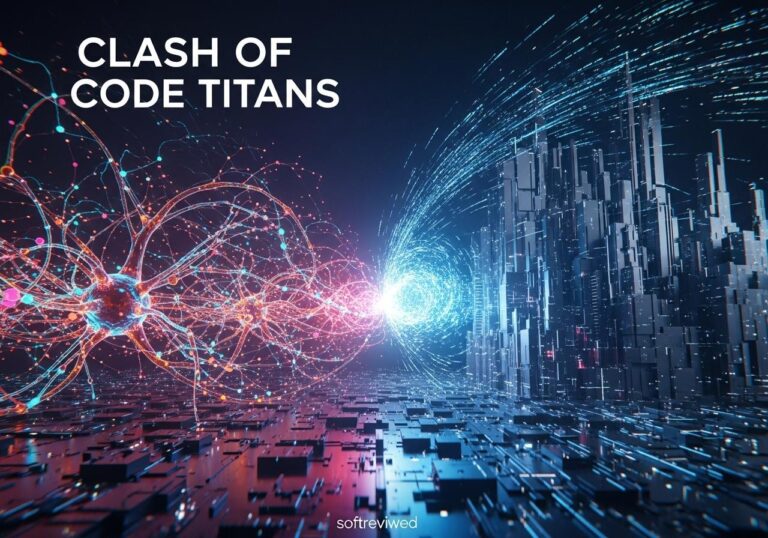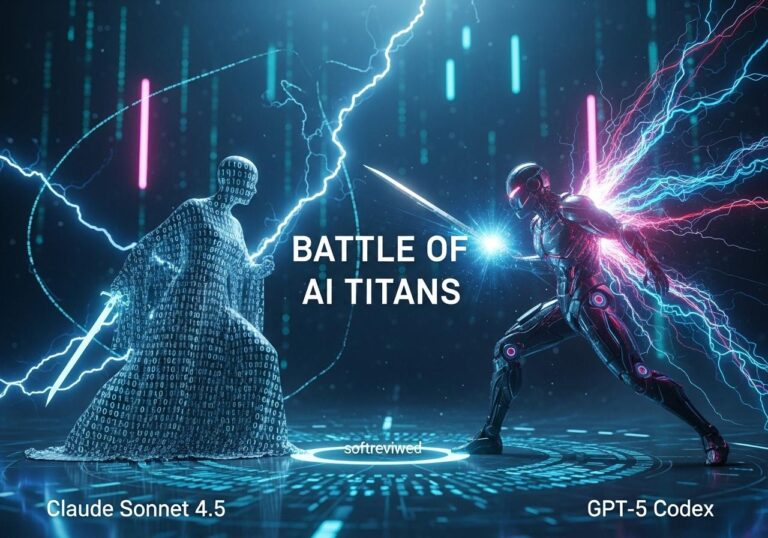🎨 AI-Generated Art: Transforming Creative Industries
Discover how AI is revolutionizing art creation and creative workflows across various sectors.
🖌️ AI Art Revolution
AI-generated art is transforming creative work across industries, opening new possibilities for artists and businesses alike.
🤖 Generative AI Tools
Tools like DALL-E and Midjourney allow users to create hyper-realistic images from text prompts, pushing the boundaries of digital creativity.
🎭 Multi-Industry Impact
AI art tools are being used in various fields, including traditional art, entertainment, and media, reshaping content creation processes.
avatars AI Avatars
AI avatars are increasingly used for immersive experiences in education, customer support, and entertainment, enhancing user engagement.
⚡ Workflow Integration
Integration of generative AI in workflows promises to enhance efficiency and creativity in content creation, streamlining production processes. Moreover, the use of Meta’s generative video AI is revolutionizing the way video content is produced, enabling creators to generate complex visual sequences with minimal manual input. This tool not only accelerates the production timeline but also opens up new avenues for creative experimentation, allowing teams to focus on refining concepts rather than getting bogged down in technical execution. As a result, generative AI is quickly becoming a cornerstone in modern content workflows.
⚖️ Addressing Concerns
Concerns about bias in training data and the potential impact on jobs are being addressed as the technology evolves and improves.
The world of artificial intelligence has taken another giant leap forward with GeneraTech's groundbreaking text-to-image model. This revolutionary AI technology is capable of producing photorealistic images from text prompts in real-time, a feat that's set to reshape multiple industries and spark debates on ethics and creativity.
The Power of Real-Time AI Image Generation 🖼️
GeneraTech, an innovative AI startup, has unveiled a cutting-edge text-to-image model that's turning heads across the tech world. This new technology can create highly detailed, realistic images within seconds of receiving a text prompt, setting a new benchmark for speed and quality in AI-generated visuals.
According to the GeneraTech Press Release (2024), this model represents a significant advancement in generative AI technology. The ability to produce high-quality images in real-time opens up exciting possibilities for various sectors, from graphic design to advertising and entertainment.
Key Features of GeneraTech's AI Model
- Lightning-fast generation: Images are created within seconds of input
- Photorealistic quality: Output rivals human-created images
- High resolution and detail: Significant improvements in image clarity
- Color consistency: Enhanced color accuracy and harmony
- Versatility: Capable of generating diverse image styles and subjects
Revolutionizing Creative Industries
The implications of this technology for creative industries are vast. VentureBeat (2024) reports that GeneraTech's model has the potential to streamline processes in graphic design, advertising, and other visually-intensive fields, leading to increased efficiency and reduced costs.
Potential Applications
- Rapid prototyping: Designers can quickly visualize concepts
- Custom stock imagery: On-demand creation of unique stock photos
- Real-time marketing: Instant generation of visuals for time-sensitive campaigns
- Virtual set design: Quick iteration of environments for film and TV production
- Interactive storytelling: Dynamic image generation for games and interactive media
The Art of AI: A New Creative Frontier
This technological leap is not just about efficiency; it's opening up new avenues for artistic expression. The Verge (2024) highlights how this advancement is sparking debate about authorship and the future of digital art.
AI and Human Collaboration
The line between human and AI-created art is becoming increasingly blurred. This technology enables new forms of collaboration between artists and AI systems, potentially leading to entirely new art forms and creative processes.
Expert Opinion: "This technology has the potential to democratize creative processes, making them more accessible and inclusive." – Ariel Fust, AI Researcher at MIT (The New York Times, 2024)
Quality That Rivals Human Artists

GeneraTech's model demonstrates significant improvements in terms of image resolution, detail, and color consistency. TechCrunch (2024) reports that these advancements make it possible for AI-generated images to rival those created by human artists.
Impressive Statistics
- 85% of images generated are visually indistinguishable from human-created images (GeneraTech Press Release, 2024)
- Trained on over 100,000 images to achieve its advanced capabilities (TechCrunch, 2024)
The Dark Side: Potential Misuse and Ethical Concerns
While the technology offers exciting possibilities, it also raises important ethical questions. CNN (2024) highlights concerns about the potential use of this technology in disinformation campaigns and the creation of deepfakes.
Key Concerns
- Misinformation: Rapid generation of realistic fake images
- Identity theft: Creation of fake profiles or impersonation
- Copyright infringement: Unauthorized recreation of copyrighted images
- Manipulation of public opinion: Use in political propaganda
Expert Insight: "We need to carefully consider the ethical implications of this technology to ensure it is used responsibly and for the betterment of society." – Dr. Sophia Patel, AI Ethicist at Stanford University (NPR, 2024)
The Technology Behind the Magic
GeneraTech's breakthrough is the result of advanced AI algorithms and massive datasets. Let's break down the key components that make this technology possible.
Neural Architecture
The model uses a sophisticated neural architecture that integrates both generative and discriminative components:
- Generative Network: Creates initial image based on text input
- Discriminative Network: Assesses image quality and realism
- Feedback Loop: Iteratively improves image based on discriminator feedback
Training Process
The model's impressive capabilities are the result of extensive training:
- Dataset: Trained on millions of image-text pairs
- Fine-tuning: Specialized training for different image styles and subjects
- Adversarial Training: Continuous improvement through competition between generator and discriminator
Industry Impact and Transformation
The release of GeneraTech's model is set to have far-reaching effects across multiple industries. Bloomberg (2024) suggests that this technology could transform the design and advertising industries by revolutionizing the way visual content is created and disseminated.
Potential Industry Changes
| Industry | Impact |
|---|---|
| Graphic Design | Rapid prototyping, automated asset creation |
| Advertising | Real-time campaign generation, personalized ads |
| Film & TV | Quick set design, visual effects streamlining |
| Gaming | Dynamic environment generation, customized assets |
| E-commerce | On-the-fly product visualization |
The Productivity Boost
One of the most significant benefits of this technology is its potential to increase productivity. Forbes (2024) reports that real-time image generation can significantly accelerate design workflows, leading to increased productivity and cost savings.
Productivity Enhancements
- Faster Iteration: Quick generation of multiple design options
- Reduced Stock Image Costs: Custom image creation on-demand
- Streamlined Collaboration: Instant visualization of ideas for team discussions
- 24/7 Availability: AI doesn't sleep, allowing for round-the-clock creativity
Job Market Implications
While the technology offers exciting possibilities, it also raises questions about its impact on the job market. The Economic Policy Institute (2024) warns that automation of image generation could lead to job displacement in industries that rely heavily on visual content creation.
Potential Job Market Effects
- Graphic Designers: Shift towards AI tool management and high-level creative direction
- Stock Photographers: Decreased demand for traditional stock imagery
- Illustrators: Increased competition from AI-generated illustrations
- Art Directors: Focus on AI prompt engineering and creative strategy
Regulatory Challenges and Intellectual Property
The rapid advancement of AI image generation technology is outpacing current regulatory frameworks. This has led to calls for new guidelines and regulations.
Regulatory Considerations
- Content Authenticity: Need for clear labeling of AI-generated images
- Liability: Determining responsibility for AI-generated content
- Data Privacy: Ensuring ethical use of training data
- Fair Use: Defining boundaries for AI's use of existing images
The World Intellectual Property Organization (2024) reports growing debates about intellectual property and ownership rights for AI-generated content. These discussions are likely to shape future legislation and industry practices.
The Future of AI-Generated Imagery
As we look to the future, it's clear that AI-generated imagery will play an increasingly significant role in our visual landscape. Harvard Business Review (2024) emphasizes the need to carefully consider the ethical implications of this technology to ensure it is used responsibly and for the betterment of society.
Future Developments to Watch
- Enhanced User Interfaces: More intuitive ways to guide AI image generation
- Cross-Modal Generation: Combining text, image, and even sound inputs
- Real-Time Video Generation: Moving from static images to dynamic video content
- Personalized Image Generation: AI that learns individual user preferences
- Ethical AI Frameworks: Development of guidelines for responsible use
Embracing the AI Image Revolution
GeneraTech's breakthrough in real-time, photorealistic AI image generation marks a significant milestone in the evolution of artificial intelligence and creative technologies. As we navigate this new landscape, it's crucial to balance the excitement of innovation with thoughtful consideration of its implications.
Whether you're a creative professional, a technology enthusiast, or simply curious about the future of visual media, staying informed about these developments is key. The AI image revolution is here, and it's reshaping the way we create, consume, and interact with visual content.
As we move forward, let's engage in open discussions about the ethical use of this technology, support the development of responsible AI practices, and explore the new creative possibilities that AI image generation offers. The future of visual creation is bright, and with careful stewardship, we can ensure that it benefits society as a whole.
What are your thoughts on AI-generated images? How do you see this technology impacting your field or daily life? Share your perspectives and join the conversation about the future of AI and creativity.







